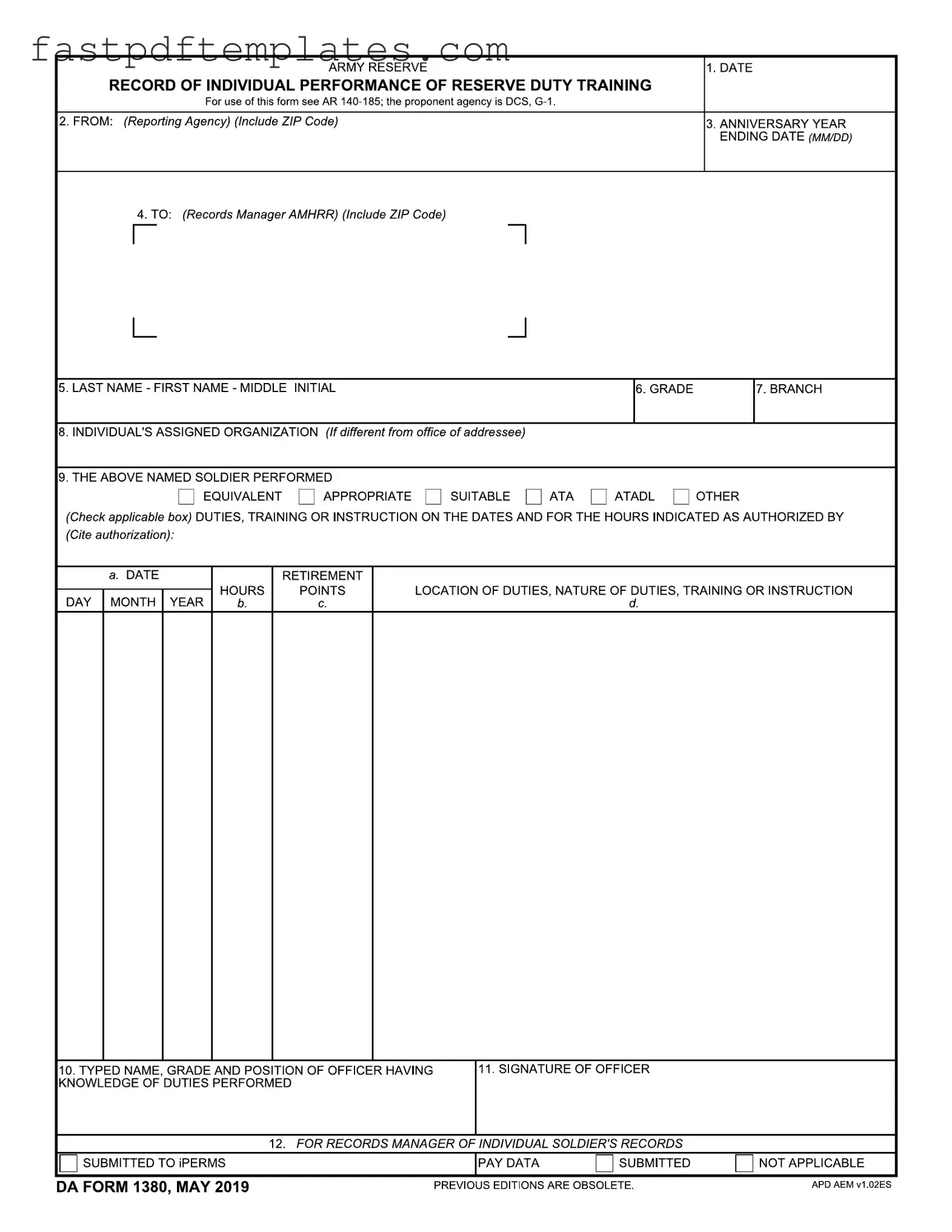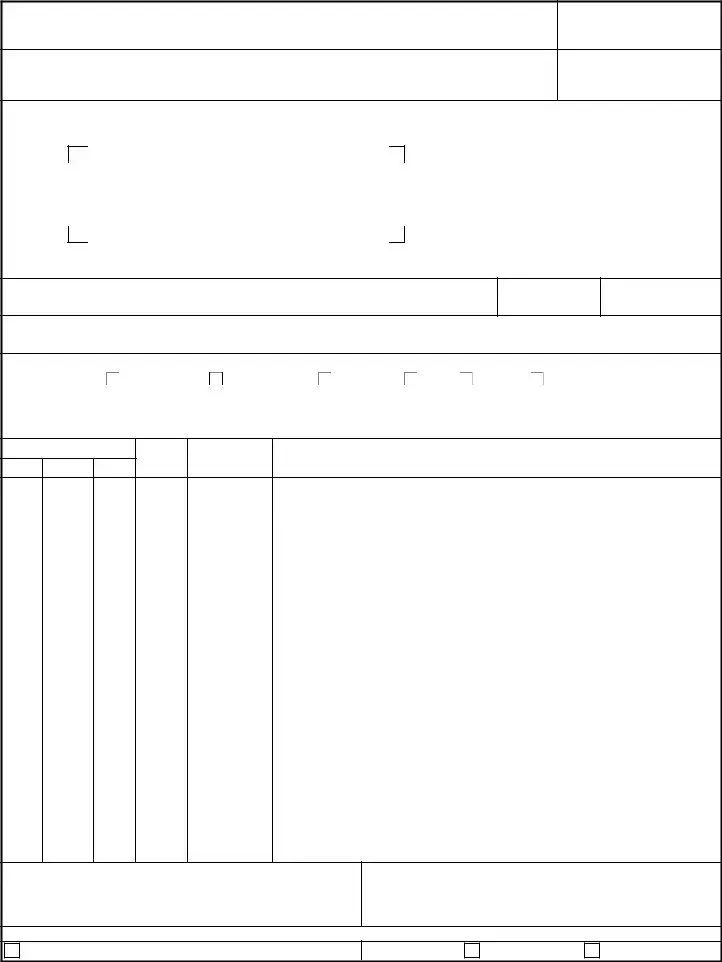The DA Form 1059, known as the Academic Evaluation Report, is similar to the DA Form 1380 in that both documents serve to record performance and training activities of military personnel. The DA Form 1059 is used specifically to evaluate the academic achievements of soldiers who have completed courses of instruction. Like the DA Form 1380, it requires details such as the soldier's name, course dates, and performance ratings. Both forms are essential for maintaining accurate records of a soldier's training and performance, contributing to their overall military profile.
The DA Form 3349, or Physical Profile, also shares similarities with the DA Form 1380, as it documents a soldier's medical condition and limitations regarding physical activities. While the DA Form 1380 focuses on training and duties performed, the DA Form 3349 is crucial for determining a soldier's fitness for duty. Each form requires the soldier's identification details and is used to inform commanders about the soldier's capabilities, ensuring appropriate assignments and training opportunities are provided.
The DA Form 4187, known as the Personnel Action Form, is another document that relates closely to the DA Form 1380. This form is used to request changes in a soldier's status, including training updates, duty assignments, and other personnel actions. Both forms require the soldier's details and are submitted through official channels for processing. While the DA Form 1380 records specific training activities, the DA Form 4187 facilitates broader personnel management and administrative actions within the Army.
The DA Form 7500, or the Reserve Component Unit Training Plan, is also comparable to the DA Form 1380 as it outlines training objectives and schedules for reserve units. This form is used to plan and document training events, ensuring that soldiers are prepared for their duties. Like the DA Form 1380, the DA Form 7500 emphasizes the importance of proper training documentation and accountability. Both forms contribute to the overall effectiveness of military training and readiness, helping to track performance and development over time.


